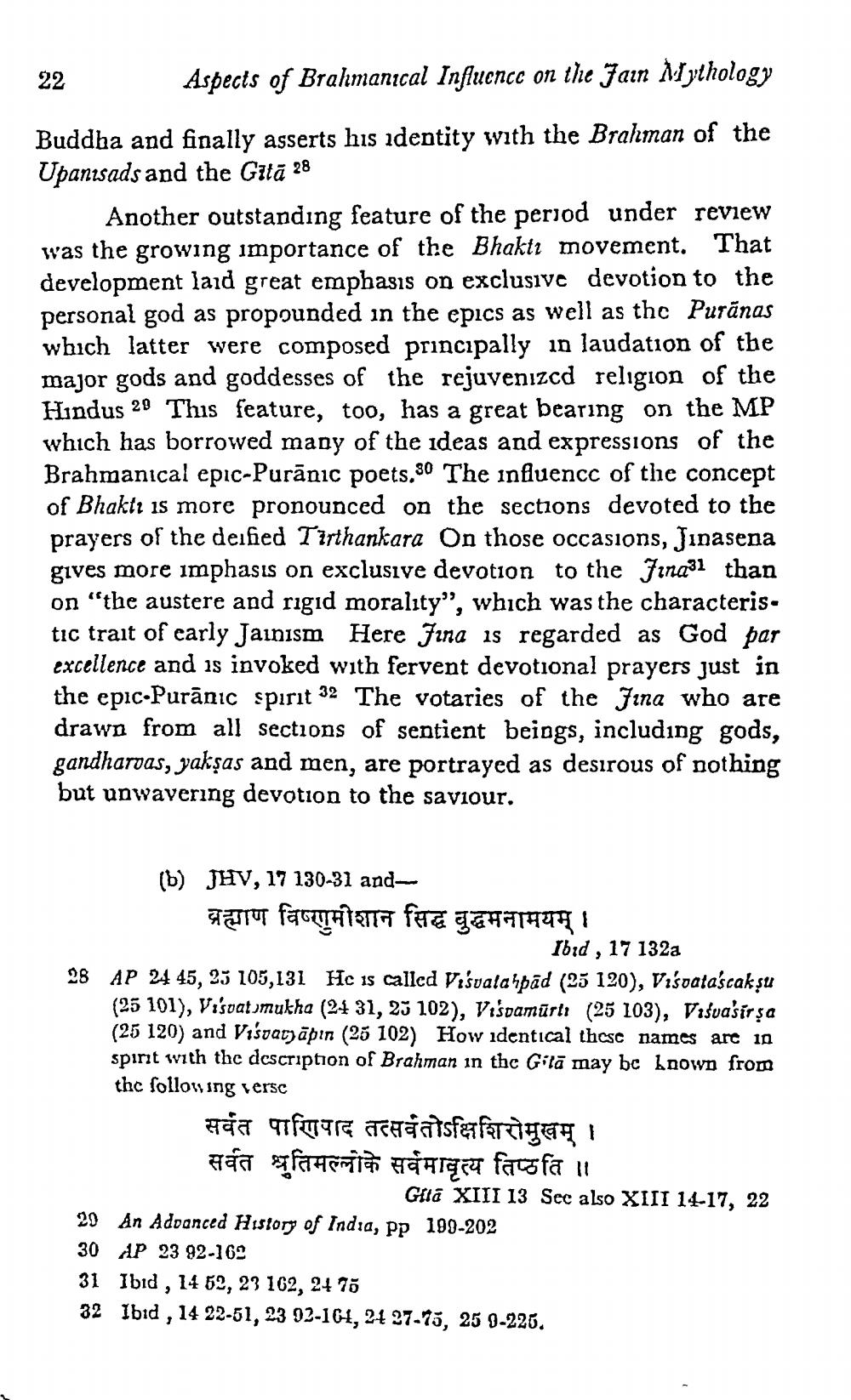________________
22
Aspects of Brahmanıcal Influence on the Jain Mythology
Buddha and finally asserts his identity with the Brahman of the Upanusads and the Gitā 28
Another outstanding feature of the period under review was the growing importance of the Bhaktı movement. That development laid great emphasis on exclusive devotion to the personal god as propounded in the epics as well as thc Purānas which latter were composed principally in laudation of the major gods and goddesses of the rejuvenizcd religion of the Hindus 29 This feature, too, has a great bearing on the MP which has borrowed many of the ideas and expressions of the Brahmanical epic-Purānic poets.30 The influencc of the concept of Bhakti is more pronounced on the sections devoted to the prayers of the deified Tirthankara On those occasions, Jinasena gives more imphasis on exclusive devotion to the final than on "the austere and rigid morality", which was the characteris. tic trait of carly Jainism Here Jina is regarded as God par excellence and is invoked with fervent devotional prayers just in the epic-Purānic spirit 32 The votaries of the Jina who are drawn from all sections of sentient beings, including gods, gandharvas, yakşas and men, are portrayed as desirous of nothing but unwavering devotion to the saviour.
(b) JHV, 17 130-31 and ब्रह्माण विष्णुमीशान सिद्ध बुद्धमनामयम् ।
Ibid , 17 132a 28 AP 24 45, 23 105,131 Hc is called Visvalahpad (25 120), Vi'svata'scak şu
(25 101), Vi'svatumukha (24 31, 23 102), Vespamūrtı (25 103), Visuasir şa (25 120) and Visvatyapın (25 102) How identical these names are in spirit with the description of Brahman in the Gilā may be lnown from the following versc
सर्वत पाणिपाद तत्सर्वतोऽक्षिशिरोमुखम् । सर्वत श्रुतिमल्लोके सर्वमावृत्य तिष्ठति ।।
Gila XIII 13 Sec also XIII 14-17, 22 20 An Advanced History of India, pp 199-202 30 AP 23 92-162 31 Ibid , 14 52, 23 162, 2475 32 Ibid , 14 22-51, 23 02-161,24 27-15, 25 9-226.




